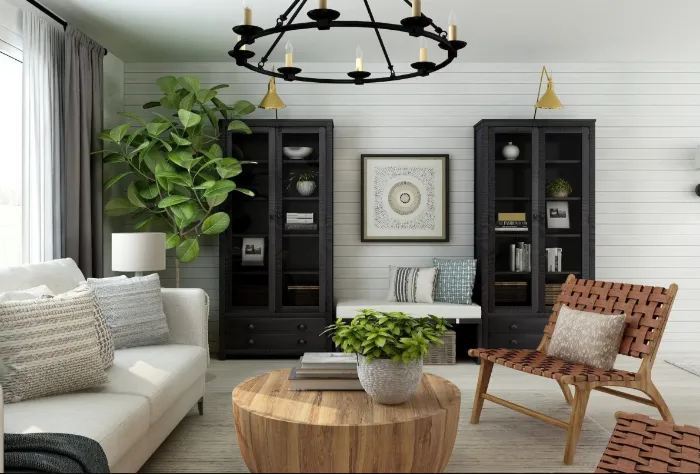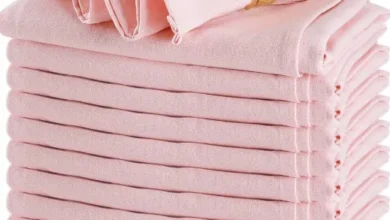How to Create an Eco-Friendly Haven at Home

Eco-friendly living has never been more crucial. As climate change accelerates and resources become scarcer, adopting sustainable practices in our homes can make a significant difference. Creating an eco-friendly haven is more than just a trend; it’s a lifestyle change that promotes health, well-being, and environmental stewardship.
In this guide, we’ll explore practical steps to transform your home into a sanctuary of sustainability. From assessing your current environmental impact to engaging with your community, each section provides actionable tips to help you make your home greener.
Contents
Assessing Your Current Environmental Impact
Conducting a Home Energy Audit
The first step in creating an eco-friendly haven is understanding your current environmental impact. Conducting a home energy audit can help you identify areas where energy is wasted and suggest improvements.
- DIY Energy Audit: Begin by inspecting your home for drafts, checking insulation, and assessing your heating and cooling systems. Tools like thermal cameras or even a simple candle test can help detect leaks.
- Professional Energy Audit: Consider hiring a professional for a comprehensive audit. They can provide detailed insights and recommendations for improving your home’s energy efficiency.
Measuring Water Usage and Waste Production
Water conservation is another crucial aspect of eco-friendly living. Start by measuring your household’s water usage and identifying waste production hotspots.
- Water Usage: Install water-saving fixtures like low-flow showerheads and faucets. Monitor your water bill for unusual spikes that may indicate leaks.
- Waste Reduction: Conduct a waste audit by examining your trash and recycling bins. Identify items that can be reduced, reused, or recycled more effectively.
Making Sustainable Design Choices
Choosing Eco-Friendly Building Materials and Furniture
When renovating or furnishing your home, opt for sustainable materials that have a lower environmental impact.
- Sustainable Materials: Choose materials like bamboo, reclaimed wood, or recycled metal. These options are not only eco-friendly but also durable and stylish.
- Eco-Friendly Insulation: If you’re in West Haven, consider eco-friendly insulation options like cellulose or wool. These materials offer excellent thermal performance while minimizing environmental impact.
Energy-Efficient Lighting and Appliances
Energy-efficient lighting and appliances are essential for reducing your home’s carbon footprint.
- Lighting: Replace incandescent bulbs with LED or CFL bulbs. These options consume less energy and have a longer lifespan.
- Appliances: Look for ENERGY STAR-rated appliances that meet stringent energy efficiency guidelines. These appliances not only save energy but also reduce utility bills.
Creating a Green Indoor Environment
Indoor Plants and Natural Air Purifiers
Indoor plants are natural air purifiers that can enhance your home’s air quality and aesthetic appeal.
- Best Plants for Air Purification: Consider plants like spider plants, snake plants, and peace lilies. These species are known for their ability to filter indoor air pollutants.
- Placement Tips: Position plants in areas with adequate light and airflow. Grouping plants can create mini ecosystems that support growth and efficiency.
Reducing Indoor Pollution from Common Household Items
Many household items can contribute to indoor pollution. Reducing or eliminating these items can create a healthier living environment.
- Chemical-Free Products: Choose natural and organic cleaning products, free from harmful chemicals. Look for labels that indicate non-toxic and biodegradable ingredients.
- Ventilation: Ensure proper ventilation in areas like kitchens and bathrooms to reduce moisture and mold growth. Using exhaust fans and opening windows can improve air circulation.
Sustainable Practices for Everyday Living
Green Cleaning Routines and Products
Adopting green cleaning routines can significantly reduce your home’s environmental impact.
- DIY Cleaning Solutions: Create your cleaning solutions using ingredients like vinegar, baking soda, and lemon. These alternatives are effective and eco-friendly.
- Eco-Friendly Brands: Support brands that prioritize sustainability and transparency. Look for certifications like Green Seal or ECOLOGO.
Reducing, Reusing, and Recycling in the Home
Implementing the three R’s—reduce, reuse, and recycle—can minimize waste and promote a circular economy.
- Reduce: Cut down on single-use plastics and opt for products with minimal packaging. Buy in bulk to reduce waste.
- Reuse: Repurpose items like jars, containers, and old furniture. Get creative with DIY projects to give new life to used items.
- Recycle: Familiarize yourself with local recycling guidelines and properly sort recyclables. Participate in community recycling programs for items like electronics and batteries.
Engaging with the Community and Beyond
Participating in Local Eco-Friendly Initiatives
Engaging with local initiatives can amplify your efforts and inspire others to adopt sustainable practices.
- Community Gardens: Join or start a community garden. These spaces promote local food production and foster community connections.
- Clean-Up Events: Participate in neighborhood clean-up events to reduce litter and beautify your surroundings.
Supporting Sustainable Businesses
Supporting businesses that prioritize sustainability can drive positive change in the marketplace.
- Local and Sustainable: Shop from local farmers’ markets, artisans, and businesses that prioritize eco-friendly practices.
- Ethical Brands: Choose brands committed to ethical sourcing, fair trade, and environmental responsibility. Your purchasing decisions can influence market trends.
Conclusion
Creating an eco-friendly haven at home is a journey that requires commitment and mindfulness. By assessing your environmental impact, making sustainable design choices, and adopting green practices, you can transform your home into a model of sustainability.
Ready to start your journey? Implement these tips today and experience the benefits of an eco-friendly haven. Let’s make a positive impact, one home at a time.


